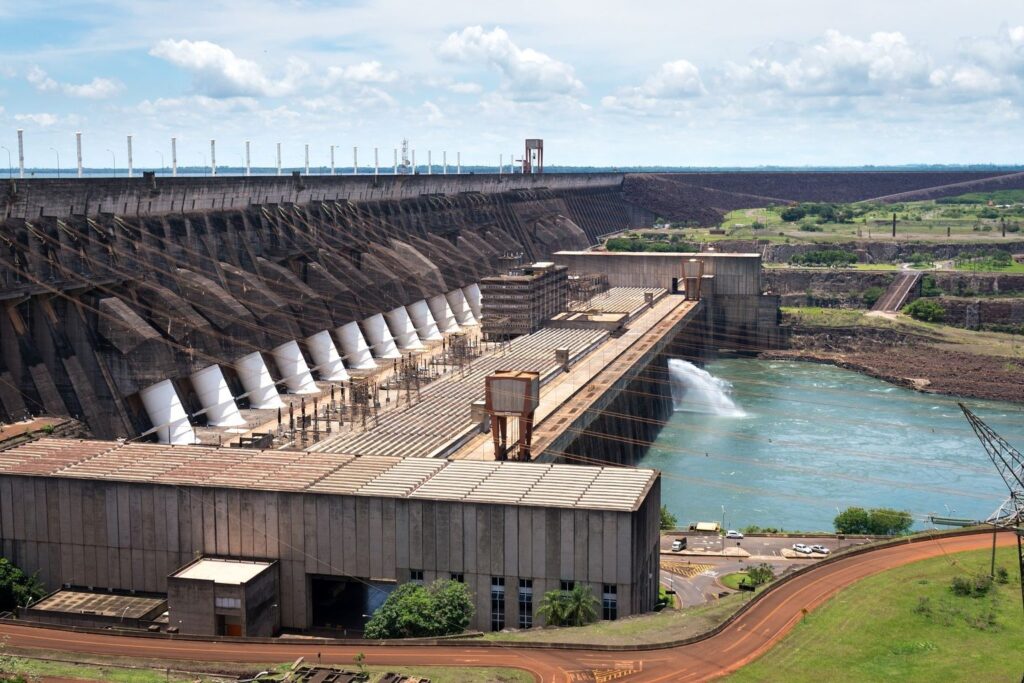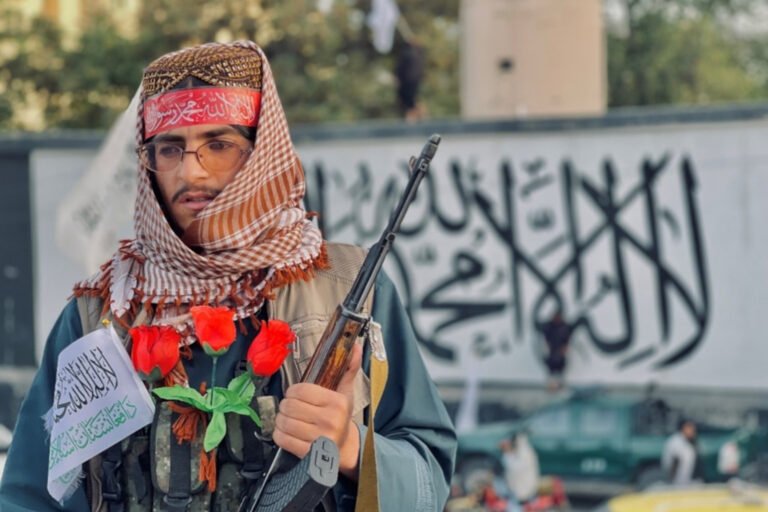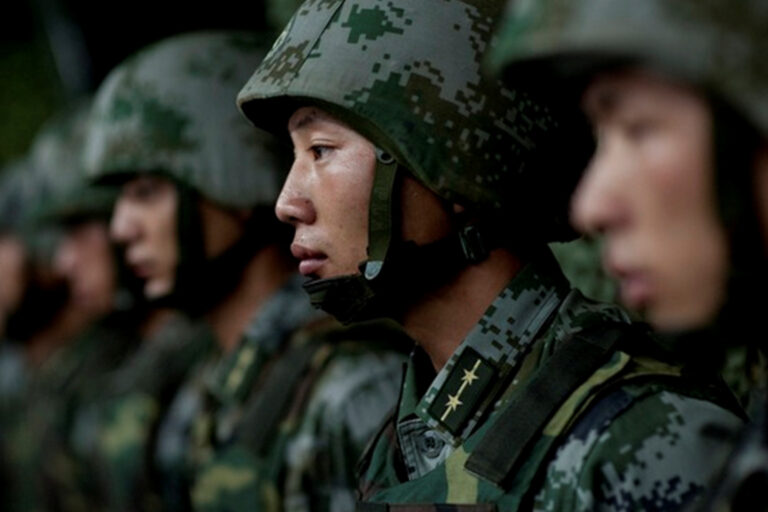Policymakers across the Western Hemisphere often lament Latin America’s lack of regional integration. On average, countries in Latin America and the Caribbean conduct the least international trade as a share of gross domestic product (GDP) in the world. Broadly, this integration deficit results from underinvestment in infrastructure, inefficient trade architectures, and natural obstacles posed by vast geographies. In turn, a lack of regional integration inhibits competitiveness vis-à-vis advanced global value chains, further contributing to sluggish growth across Latin America and raising the possibility of another “lost decade” for the region.
Sandwiched between the two largest economies in South America, landlocked Paraguay is becoming an exception to the region’s stagnant integration story. Although rarely noted alongside other regional outliers, Paraguay is pursuing growth via outward-facing infrastructure projects.[1] Yet, by overlooking integration efforts from this small but central economy, foreign policymakers preclude a holistic view of transnational flows of commodities and capital across the core of the South American continent. Patching this knowledge gap is necessary to not only evaluate local growth prospects, but also to effectively address broader issues of regional security and stability.
Marcha al este: Paraguay’s First Step to Integration
Paraguay’s present-day integration fits a longer history of shifting geopolitical positions vis-à-vis its Southern Cone neighbors. Without direct access to the sea, the Paraguayan political economy historically centered to the south as commerce on the Paraguay and Paraná Rivers navigated to the ports of Buenos Aires and Montevideo. Under Spanish colonial rule, Paraguay’s principal river ports of Asunción and Concepción grew largely under the gravitational pull of the Rio de la Plata political economy. Through the early twentieth century, European migrant flows passing through Buenos Aires continued north to Paraguay by river and railroad, reinforcing Paraguay’s commercial and cultural ties to the Rioplatense world.
Yet, a new frontier opened eastward by the mid-twentieth century. In Brazil, demographic and economic growth moved westward from southeastern population centers toward Mato Grosso and Paraná, the agro-states bordering Paraguay. From the capital Asunción, the Paraguayan government, backed by international capital, paved roads to the Brazilian border in its marcha al este.[2] Over 300 kilometers to the east of Asunción, the border city of Ciudad del Este was established in the 1950s, followed by construction of Paraguay’s first bridge to Brazil in the 1960s and the binational Itaipu Dam in the 1970s and 1980s.[3]
During the decades to follow, the resulting flow of capital and people across the Paraguay-Brazil border pivoted the Paraguayan political economy, and what was once a firm gaze toward Buenos Aires became “pendular” as Asunción swung toward Brasilia.[4] This pivot steered the small Paraguayan economy through the second half of the twentieth century as Ciudad del Este became Paraguay’s second-largest city and Itaipu became the world’s most powerful hydroelectric dam. Across the eastern administrative departments of Alto Paraná, Caagauzú, and Canindeyú, forest turned to soy fields as Brazilian agribusiness crossed the border.
The pivot toward the Brazilian border powered the Paraguayan economy with soy production and electricity from the Itaipu dam. The Itaipu dam’s construction brought a positive shock to GDP while also shielding the economy from Latin America’s lost decade and introducing Asunción to international financial markets. On a larger scale, Paraguay’s proximity to the protectionist Brazilian economy moved local markets to seek comparative advantage by exporting consumer goods at low cost, primarily via a vast re-export trade based in Ciudad del Este. These conditions shaped the contours of Paraguay’s transition to democracy and subsequent entry into the Mercosur trade bloc as the twentieth century came to a close.[5]
Look to the North: Paraguay’s Present-Day Integration
Today, another growth frontier is emerging in Paraguay’s sparsely populated north. The Paraguayan state is laying asphalt through the country’s vast Chaco region to form the central stretch of the Bioceanic Corridor, a nearly 2,000 kilometer highway to connect southwestern Brazil’s agroindustrial states to Chile’s Pacific ports.[6] Given its expected role in expanding market access for Brazilian exports, the highway arguably represents the largest project since Itaipu in which the Paraguayan state is forging new infrastructure for regional logistics.[7]
Paraguay’s bioceanic highway will connect to Porto Murtinho, Brazil via a new bridge at the northern river post of Carmelo Peralta. This bridge is one of several new crossings at international junctions. A brand-new bridge spans the Paraná River at Paraguay’s tri-border with Brazil and Argentina, and another over the Paraguay River near Asunción will facilitate movement between the capital and the Argentine border. Further downriver is a proposed bridge to connect the city of Pilar with the province of Formosa, Argentina—meaning that altogether, the number of Paraguay’s international bridges over its principal waterways will increase from two to five in just a few years.[8]
Whereas the Bioceanic Corridor may serve primarily as a modality for Brazilian exports seeking outlets to the Pacific, other projects will improve connections between the Paraguayan north and existing population centers. From Asunción, the government is widening and repaving 550 kilometers of the Ruta Transchaco, the highway that connects the capital region to central Chaco hubs and the Bolivian border.[9] While executed by Paraguay’s Ministry of Public Works, the major road projects underway are backed by international financial institutions such as the Development Bank of Latin America and Inter-American Development Bank, an indication of broader regional importance. Several of Paraguay’s infrastructure investments are also backed by FOCEM, a Mercosur mechanism that funnels contributions from the trade bloc’s larger members to infrastructure projects in the smaller member states.[10]
Integration Infrastructure: Beneficiaries Local and Foreign
Despite its promise to facilitate greater regional connectivity, Paraguay’s present-day bet on integration is not certain to produce immediate benefits for local productivity or export diversification. Even for Paraguayan agroindustry in the Chaco, existing export channels via the Paraguay-Paraná River may remain more efficient than the new Bioceanic Corridor.[11] Likewise, the new bridge in Asunción that will span the Paraguay River to virgin land held by private capital is unlikely, at least in the near future, to efficiently serve transport and productivity in the congested capital region.
Nor do Paraguay’s state-led integration efforts have a history of promoting local over regional economic growth. The centerpiece of Paraguay’s first step toward integration, Itaipu, for decades failed to spur complementary investment to incentivize industrialization across the Paraguayan interior. The dam added electricity exports to Paraguay’s matrix of extractivist activities, but it failed to spur significant diversification of Paraguay’s basic export basket, hindering overall output growth.[12] Only in 2013, three decades after Itaipu’s completion, did Paraguay install its first 500-KV transmission line connecting the power station to the capital region. Similarly, as the mid-century Paraguayan state paved roads across the eastern half of the country, new routes prioritized newly-arrived brasiguayos and Brazilian agribusiness’ soy shipments to river ports over existing population centers. Partly as a result, Paraguay’s present-day integration projects fuel doubt over who they primarily serve—local development or Brazil’s expansive geopolitical and multinational interests.[13] Familiar with past foreign imposition upon internal affairs, or at least a narrative of state entreguismo, cross-sections of Paraguayan society remain skeptical of today’s state-led integration.[14]
Nonetheless, more of Paraguay’s productive centers are in need of greater connectivity to mitigate the risk of external shocks such as climate change. Severe droughts from 2019 to 2022 not only reduced agricultural yields, but also forced barge fleets that move Paraguayan commodities to market to lighten loads due to low Paraguay River levels. These events underscore the importance of complementary infrastructure that boosts resilience against external shocks.[15] Not only is the waterway critical to Paraguay and up- and down-river trade partners, but also the United States and China, who both buy the region’s commodities in bulk. The formal involvement of the US Army Corps of Engineers in Paraguay-Paraná dredging studies signals the international dimensions of the waterway, especially as it becomes intersected by new corridors of transit and industry.[16]
Ideally, investment in infrastructure will accelerate productivity gains in Paraguay’s agroindustrial sector and aid local insertion into regional value chains. At the eastern Brazilian border, where integration infrastructure has accumulated over decades, there are signs of success as Paraguay’s small but growing maquila industry produces auto parts for the large Brazilian market. Cheaper labor in Paraguay makes Brazilian industry more competitive, an example of how Paraguay’s regional insertion can facilitate greater regional integration into global markets.
Today’s public-sector investment in connectivity across the north could support foreign direct investment elsewhere in Paraguay. In the department of Concepción, Paraguay’s largest-ever private investment of a nearly $4 billion USD pulp mill is under construction on the banks of the Paraguay River. This project expects to export paper sourced from eucalyptus grown in local silvopastoral systems and from land across the Brazilian border, recalling nineteenth-century trade patterns in which Mato Grosso exported commodities down the Paraguay River via Concepción. Investors are also betting on new concrete and meatpacking plants in Concepción, which, after decades of neglect by the state, is proximate to the infrastructure and growth coming to the Paraguayan north.[17]
Integration Infrastructure: Regional and US Security Implications
Beyond issues of local growth and productivity, Paraguay’s renewed regional integration encompasses broader security dimensions. As a relatively open market between the protectionist Brazilian and Argentine economies, Paraguay is a hub for illicit trade and an increasingly central narcotrafficking corridor. Mid-century infrastructure investment at the eastern Brazilian border fueled Paraguay’s expansive contraband economy, with goods from Asia, Brazil, and the United States imported to Ciudad del Este and then re-exported to the Brazilian market. Today, as new infrastructure facilitates regional logistics across once-remote swaths of the Paraguayan north, illicit trade is also likely to find additional footholds. The risk of illicit actors capitalizing upon Paraguay’s formal investment in connectivity should invite closer study from policymakers across the Western Hemisphere.
Following the 1994 Argentine Israeli Mutual Association bombing in Buenos Aires and the September 11, 2001 terror attacks, the United States and international security community partners placed greater attention on the porous tri-border area for its links to Hezbollah financing cells and money laundering networks. Since then, however, other transnational criminal organizations, such as the Brazilian cartel Primeiro Comando da Capital, have branched out from border strongholds into the Paraguayan interior as the drug trade becomes more sophisticated.[18] In 2022, Paraguay’s largest-ever anti-narcotics operation exposed how Andean cocaine passes through remote northern departments, down the Paraguay River, and to European and Asian markets. Narco-violence, once confined to the Brazilian border, has since spread as far as Asunción, and the influence and proceeds of the sprawling illicit economy allegedly infiltrates top levels of the Paraguayan state.
The international security community would therefore benefit from a perspective of Paraguay that looks beyond the tri-border area, especially as new infrastructure investments materialize across the Chaco and Paraguayan north. Paraguay’s security apparatus, which includes the National Anti-Drug Secretariat and the Secretariat for the Prevention of Money Laundering, already faces institutional deficiencies. Yet, in confronting the expanded reach of transnational crime, Paraguayan authorities face not only a scarcity of resources but also a delicate balancing act between security and competitiveness. While Paraguay’s national customs agency promotes the installation of new anti-narcotics scanner technology (donated by longstanding partner Taiwan) at the country’s river ports, greater surveillance also raises costs across the supply chain, which is detrimental to a landlocked country that seeks to lower barriers to trade. Paraguay’s formal investments in connectivity may ultimately benefit both economic growth and transnational organized crime, creating dilemmas for local government and security policy in the Western Hemisphere.
Conclusion
When Washington’s foreign policy circles look at Paraguay, they focus on issues of corruption, weak institutions, and illicit activity at the tri-border. These issues will remain at the forefront of bilateral and multilateral agendas after a new Paraguayan government takes office in 2023. However, without greater awareness of Paraguay’s evolving role in regional integration, policymakers may fail to recognize how new axes of growth could also exacerbate existing challenges to regional security. Situated at the center of South America and between the continent’s largest markets, Paraguay’s potential to see deteriorating security poses risks well beyond national borders.
Investment in integration infrastructure is critical to Paraguay’s pursuit of market access, productivity, and growth. However, it is important to recognize that greater connectivity is likely to facilitate flows of illicit activity in areas vulnerable to insecurity. This situation should invite more studies on the relation between formal logistical networks and transnational illicit activity in Paraguay.[19] Just as mid-twentieth century infrastructure investment at the eastern Brazilian border created conditions for Paraguay’s illicit economy to flourish, formal investment in northern transit corridors may also aid narcotrafficking in the present day.[20] For US policymakers, a renewed look at Paraguay’s increasingly central place in the region is necessary to work effectively with local institutions and produce hemispheric security policy for the decade-plus ahead.
Works Cited
Pablo Acosta, “Trade, Regional Integration and Collaboration: An Agenda for Brazil and Latin America,” World Bank, June 16, 2022, https://www.worldbank.org/en/news/opinion/2022/06/16/comercio-integracao-regional-e-colaboracao-uma-agenda-para-o-brasil-e-a-america-latina.
José Antonio Ocampo, “Can Latin America Avoid Another Lost Decade?,” Project Syndicate, January 3, 2020, https://www.project-syndicate.org/commentary/latin-america-lost-decade-low-growth-by-jose-antonio-ocampo-2020-01.
Will Freeman, “Is Latin America Stuck?,” Foreign Affairs, November 25, 2022, https://www.foreignaffairs.com/central-america-caribbean/latin-america-stuck.
Diego Abente Brun, “Constraints and Opportunities: Prospects for Democratization in Paraguay,” Journal of Interamerican Studies and World Affairs 30, no. 1, (pp. 73–104), 1988, https://www.cambridge.org/core/journals/journal-of-interamerican-studies-and-world-affairs/article/abs/constraints-and-opportunities-prospects-for-democratization-in-paraguay/285ABF1BCA6D6A17D0A01CC60476B037.
Fernando Masi and Dionisio Borda, Estado y Economía en Paraguay 1870-2010 [State and Economy in Paraguay 1870-2010], CADEP, 2011, http://www.cadep.org.py/uploads/2022/05/Estado-y-Economi%CC%81a-en-Paraguay-1870-2010.pdf.
Melissa Birch, Pendulum Politics: Paraguayan Economic Diplomacy, 1940-75. In Lawrence A. Herzog (Ed.), Changing Boundaries of the Americas, (San Diego: University of California at San Diego Press, 1992), pp. 203-228.
Fernando Masi, Diego Abente Brun, and Carlos Gómez Florentín, Política Exterior Brasileña: Oportunidades y obstáculos para el Paraguay [Brazilian Foreign Policy: Opportunities and obstacles for Paraguay], CADEP, 2017, www.cadep.org.py/uploads/2022/05/Política-exterior-Brasileña.pdf.
“Puente de la Integración, financiado por Itaipu, fue diseñado para cubrir requerimientos del tránsito actual y futuro [Integration Bridge, Financed by Itaipu, Was Designed to Meet Present and Future Transit Needs],” Itaipu Binacional, August 3, 2022, https://www.itaipu.gov.py/es/sala-de-prensa/noticia/puente-de-la-integracion-financiado-por-itaipu-fue-disenado-para-cubrir-reque.
“Puente Héroes del Chaco alcanza 75% de avance en todos los frentes de trabajo [Heroes of the Chaco Bridge Reaches 75% Completion Across All Parts of the Project],” Agencia de Información Paraguaya, December 10, 2022, https://www.ip.gov.py/ip/puente-heroes-del-chaco-alcanza-75-de-avance-en-todos-los-frentes-de-trabajo/.
“Mario Abdo and Alberto Fernández anuncian construcción del puente Pilar-Puerto Cano [Mario Abdo and Alberto Fernández Announce Construction of the Pilar-Puerto Cano Bridge],” ABC Color, December 6, 2022, https://www.abc.com.py/politica/2022/12/06/mario-abdo-y-alberto-fernandez-anuncian-construccion-del-puente-pilar-puerto-cano/.
“El proceso para la construcción de la nueva Ruta Transchaco está en marcha [The Process for the Construction of the New Transchaco Route is Underway],” Ministerio de Obras Públicas y Comunicaciones, https://www.mopc.gov.py/index.php/ruta-transchaco.
FOCEM: 15 años construyendo integración [FOCEM: 15 Years of Building Integration], Secretaría del MERCOSUR, May 2021, https://www.mercosur.int/documento/focem-15-anos-construyendo-integracion/.
Belén Servín and Fernando Masi, Territorios y Empresas. Aproximación al Desarrollo de lasRegiones en Paraguay [Territories and Firms. Approximating the Development of Regions in Paraguay], CADEP, October 2018, http://www.cadep.org.py/uploads/2022/05/Territorios-y-Empresas-libro.pdf.
El Fondo para la Convergencia Estructural del Mercosur – FOCEM (2005-2015) [The Mercosur Structural Convergence Fund – FOCEM (2005-2015)], Secretaría del MERCOSUR, December 2015, https://focem.mercosur.int/docs/FOCEM_es.pdf.
“Contra el ingreso de camiones brasileños [Against the Entry of Brazilian Trucks],” ABC Color, May 19, 2016, https://www.abc.com.py/nacionales/camioneros-contra-ingreso-de-bitrenes-1481462.html.
Ricardo Hausmann and Bailey Klinger, Growth Diagnostic: Paraguay, Harvard University Center for International Development, August 2007, https://growthlab.cid.harvard.edu/files/growthlab/files/growth_diagnostic_paraguay.pdf.
“Progress On Energy Integration in South America,” Conexión INTAL, Inter-American Development Bank, August 2, 2017, https://conexionintal.iadb.org/2017/08/02/avanza-la-integracion-energetica-suramericana/?lang=en.
PNUD, Paraguay, impactos económicos y sociales de la sequía [Paraguay, Economic and Social Impacts of the Drought] United Nations, September 2022, https://www.undp.org/sites/g/files/zskgke326/files/2022-09/UNDP-PY-Paraguay-Impactos-economicos-y-sociales-de-la-sequia.pdf.
Damian Profeta, “Empresa china apuesta a gestionar autopista fluvial en Argentina [Chinese Firm Bets on Managing Fluvial Highway in Argentina],” Diálogo Chino, August 28, 2020, https://dialogochino.net/es/infraestructura-es/37072-empresa-china-apuesta-gestionar-hidrovia-parana-paraguay/.
“Delegación del Cuerpo de Ingenieros del Ejército de los Estados Unidos (USACE) visita Paraguay para analizar posible cooperación [Delegation from the United States Army Corps of Engineers (USACE) Visits Paraguay to Analyze Possible Cooperation],” Embajada de los Estados Unidos en Paraguay, March 31, 2022, https://py.usembassy.gov/es/delegacion-del-cuerpo-de-ingenieros-del-ejercito-de-los-estados-unidos-usace-visita-paraguay-para-analizar-posible-cooperacion/.
Mabel Gómez Rojas, “Expo Maquila 2022: Sector celebra crecimiento de 500% en 7 años y aspira a seguir atrayendo más inversiones [Maquila Expo 2022: Sector Celebrates 500% Growth in 7 years and Aims to Continue Attracting More Investment],” Marketdata, September 2, 2022,
https://marketdata.com.py/noticias/nacionales/expo-maquila-2022-sector-celebra-crecimiento-de-500-en-7-anos-y-aspira-a-seguir-atrayendo-mas-inversiones-86454/.
Gustavo Rojas, “La inversión brasileña directa en Paraguay. Características, motivaciones y perspectivas [Brazilian Direct Investment in Paraguay. Characteristics, Motives, and Perspectives],” Observatorio de Economía Internacional, November 2012, https://www.cadep.org.py/uploads/2022/05/24.pdf.
“Paracel, la inversión privada más grande de Paraguay tendrá su zona franca en Concepción [Paracel, Paraguay’s Largest Private Investment, Will Have its Free Zone in Concepción],” Ministerio de Industria y Comercio, August 24, 2022, https://www.mic.gov.py/mic/w/contenido.php?pagina=2&id=2762
Christine Folch, Hydropolitics: The Itaipu Dam, Sovereignty, and the Engineering of Modern South America, (New Jersey: Princeton University Press, 2019), https://press.princeton.edu/books/hardcover/9780691186597/hydropolitics.
“Plan Nacional de Desarrollo 2030 [National Development Plan 2030],” Secretaría Técnica de Planificación del Desarrollo Económico y Social (STP), 2021, https://www.stp.gov.py/pnd/.
Natasha Niebieskikwiat, “El Gobierno le reclamó a Paraguay por la presencia de militares de EE.UU. en la Hidrovía [The Government Complains to Paraguay About the US Military Presence on the Hidrovía],” Clarín, October 19, 2022, https://www.clarin.com/politica/gobierno-reclamo-paraguay-presencia-militares-ee-uu-hidrovia_0_gMpT839zds.html.
“Paraguay: An Overview,” Congressional Research Service, September 6, 2022, https://crsreports.congress.gov/product/pdf/IF/IF12207.
“‘A Ultranza Py’ es el mayor operativo contra el lavado de dinero del narcotráfico en el país [‘Ultranza Py’ is the Country’s Largest Operation Against Money Laundering from Narcotrafficking],” Agencia de Información Paraguaya, February 23, 2022, https://www.ip.gov.py/ip/a-ultranza-py-es-el-mayor-operativo-contra-el-lavado-de-dinero-del-narcotrafico-en-el-pais/.
German de los Santos, “La ruta fluvial que traslada toneladas de cocaína a Europa y un excéntrico prófugo en las sombras [The River Route That Transports Tons of Cocaine to Europe and an Eccentric Fugitive in the Shadows],” La Nación, June 16, 2022, https://www.lanacion.com.ar/seguridad/avance-narco-la-ruta-fluvial-por-la-que-navegan-toneladas-de-cocaina-hacia-europa-y-el-profugo-de-nid16062022/#/.
Guillermo Garat, “Paraguay: la tierra escondida. Examen del mayor productor de cannabis de América del Sur [Paraguay: The Hidden Land. Examination of the Largest Cannabis Producer in South America],” Transnational Institute, October 2016, https://www.tni.org/es/publicaci%C3%B3n/paraguay-la-tierra-escondida.
“Sicariato: matan al narco Ryguasu en estacionamiento de supermercado de Asunción [Hit Job: the Narco Ryguasu is killed in Parking Lot of Asunción Supermarket],” Última Hora, February 25, 2023, https://www.ultimahora.com/sicariato-matan-al-narco-ryguasu-pleno-supermercado-asuncion-n3050391.html
“Treasury Sanctions Paraguay’s Former President and Current Vice President for Corruption,” U.S. Department of the Treasury, January 26, 2023, https://home.treasury.gov/news/press-releases/jy1221.
Juan Carlos Herken Krauer, El Paraguay rural entre 1869 y 1913. Contribución a la historia económica regional del Plata [Rural Paraguay Between 1869 and 1913. Contribution to the Regional Economic History of the Plata], (Asunción:Centro Paraguayo de Estudios Sociológicos, 1984).
Samantha Schmidt and Diana Durán, “Prosecutor on His Honeymoon is Gunned Down by Hit Men at Beach,” Washington Post, May 11, 2022, https://www.washingtonpost.com/world/2022/05/11/colombia-paraguay-prosecutor-marcelo-pecci/
“Prueban nuevos escáneres de Aduanas [New Customs Scanners Tested],” ABC Color, January 18, 2023, https://www.abc.com.py/economia/2023/01/18/prueban-nuevos-escaneres-de-aduanas/.
Carlos Aníbal Peris Castiglioni, “Desmitificando: Presencia del Estado en relación al crecimiento del narcotráfico en Paraguay [Demystifying: Presence of the State in Relation to the Growth of Narcotrafficking in Paraguay],” Revista jurídica: Investigación En Ciencias Jurídicas y Sociales, 2(12), (pp. 151–166), December 2022, https://ojs.ministeriopublico.gov.py/index.php/rjmp/article/view/270/424.
[1] Among today’s commonly cited exceptions are Chile and Uruguay, for their free-trade campaigns; Mexico, for its North American integration; and Panama and Costa Rica, for their logistics and technology hubs.
[2] The marcha al este, or “march to the east,” was the Paraguayan counterpart to Brazil’s “march to the west” under the state-led expansionist projects of president Getúlio Vargas’ Estado Novo.
[3] While these were the most visible pieces of Paraguay’s marcha al este, prior groundwork had strengthened bilateral ties. Brazilian president Getúlio Vargas’ 1941 visit to Asunción kickstarted broader economic, cultural, and military engagement. Brazil also granted Paraguay access to free zones at the Atlantic seaports of Santos and Paranaguá (Abente, 1988). An expansion of credit from Brazil to Paraguay, the opening of the first Brazilian bank branch in Asunción, and agreements to pursue joint dredging operations on the Paraguay River also followed Vargas’ visit in 1941 (Borda and Masi, 2011).
[4] Birch (1992) describes Paraguay’s 20th-century “pendulum politics” in greater detail.
[5] Paraguay’s thirty-five-year dictatorship under president Alfredo Stroessner ended in 1989, and in 1991 Paraguay became a founding member of Mercosur, which remains the principal mechanism for economic integration in the Southern Cone.
[6] Although the Chaco covers 60 percent of national territory, it holds just 3 percent of Paraguay’s population.
[7] As Masi (2017) notes, the construction of Itaipu also brought Brazil and Argentina to first engage in substantial talks over resource management, an important precedent for later negotiations around Mercosur and other integration mechanisms.
[8] Six bridges when counting the Puente Heroes del Chaco in Asunción, near the Argentine border.
[9] The central Chaco is home to highly productive agro-industrial cooperatives in Paraguay’s Mennonite communities. Servín and Masi (2018) describe the Chaco as a “region of economic take-off.”
[10] Paraguay is the largest beneficiary of FOCEM, receiving 64 percent of total FOCEM funds in the 2005-2015 period, or nearly USD $700 million.
[11] While Paraguayan producers are still to rely on the Hidrovía Paraguay-Paraná, exporters from Brazil’s agro-states of Mato Grosso and Mato Grosso do Sul will welcome new openings to Pacific export markets. However, there are some uncertainties surrounding cargo regimens and regulations between Brazil and Paraguay. For years, Paraguayan truckers have protested the use of Brazilian bi-train trucks on Paraguayan soil.
[12] See Hausmann and Klinger (2007) for more on Paraguay’s export growth prospects.
[13] See Folch (2019) for more on the politics surrounding Itaipu.
[14] Gómez describes criticism of the Stroessner regime’s entreguista or “traitorous” Itaipu dealings in greater depth. See Abente, Masi, and Gómez (2017).
[15] Such is consistent with one of the four main axes of the government’s 2030 National Development Plan, “Proyección de Paraguay en el mundo,” which emphasizes greater intermodal connectivity between existing waterways and expanded land and air connections.
[16] Some political actors in Paraguay and Argentina have raised concerns over this involvement, often in reference to the military affiliation of the USACE.
[17] Some argue that the Paraguayan state’s previous neglect of Concepción was politically motivated by the city’s status as an opposition stronghold following the 1947 Paraguayan civil war. Earlier in the 20th century, Concepción benefitted from the Mato Grosso livestock and forestry trade, which spurred investment in communications and infrastructure, as well as unrealized plans such as a railroad to Brazil. See Herken Krauer (1984).
[18] For many, the May 2022 assassination of Paraguayan prosecutor Marcelo Pecci in Colombia was a stark introduction to the transnational dimensions of the Paraguayan drug trade.
[19] For example, Concepción is primed for multinational investments in industry and infrastructure and is also explicitly flagged by the US State Department as home to transnational criminal elements.
[20] Peris (2022) argues that the growth and diversification of the Paraguayan drug trade has not necessarily been mitigated by the presence of the state—national police, anti-narcotics agents, and prosecutors—in Paraguay’s “red zones” of Concepción, Amambay, and Canindeyú.




